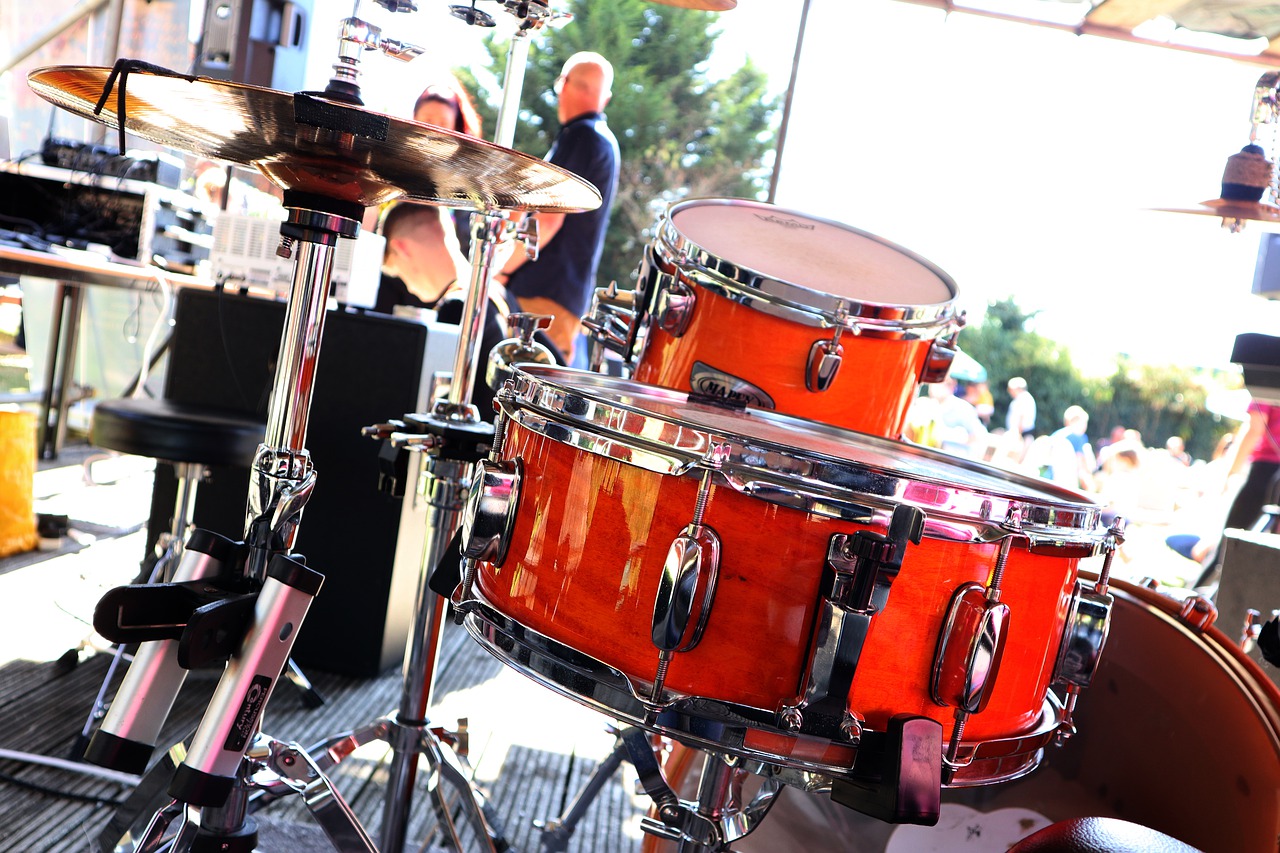Birch vs Maple Drums – Which is Better?

Birch drums have a brighter, snappy tone whereas Maple drums have a warmer, lower tone. Maple drums are generally more expensive than Birch drums. That being said, Birch is still often more expensive when compared to Poplar and Basswood.
There are few greater pleasures in the life of a drummer than buying a new kit. You’re either taking the next step in your drumming journey or adding another kit to your collection.
Nonetheless, it’s a great feeling. But often, as it happens with many drummers, you might know the different kinds of woods that shells are made out of. However, you may not know exactly what’s the difference between them.
Most wooden shells today are made of Birch or Maple. Although each of the two woods has its own characteristics, a lot of the subtleties are lost to anyone who is not a connoisseur. What is caught, however, is the quality of drum heads and how they are tuned.
No wood, regardless of how expensive it is or how many plies there are, will compensate for crappy heads and poor tuning. So, choosing good drum heads and tuning them properly is just as important as choosing the right wood, if not more.
Contents
At a Glance
- Birch and Maple drums are the two most popular woods used for manufacturing drum shells. Birch is the most common while Maple is considered more premium quality with its dense nature.
- Maple drums produce a warm tone with much more lows than Birch drums. In comparison, Birch drums produce a brighter and punchy sound with more mids and highs than Maple drums.
- In addition to being more expensive, Maple drums also have a longer sustain than Birch drums.
- Maple drums are a great choice for genres like jazz, funk, and indie, whereas Birch drums are suitable for harsher genres like metal and rock.
- In terms of quality and longevity, Maple wood is denser and used in a lot more high-end kits, therefore, it’s a more reliable choice.
Birch Drums
Birch is the most common wood that is used to manufacture drum shells today. The wood is in abundant supply, and it can be used to create incredible-sounding drums.
Birch shells are characterized by their bright and snappy sounds. They are fatter, louder, and more focused when compared to Maple.
Even though Birch shells are more aggressive, they have a nice, well-balanced projection. The high-ends in Birch shells come out nicely. Because of these reasons, Birch drums work excellently in live settings when playing genres like rock or metal.
Since Birch tends to project the mids and highs better, some lows may be lost. Birch is also not the best option when playing softer music or in a cozier venue.
There are plenty of Birch trees that can be found in North America, Europe, and Asia. This makes it easier to make Birch shells. Naturally, Birch shells are less expensive than Maple. You are likely to find Birch drums across most ranges, going from low to the upper end. It depends on the quality of the wood, the number of plies used, and the bearing edge.
Maple Drums
Maple drums are in high demand all across the drumming community as they’re considered to be premium shells. Maple is a hardwood like Birch, but much denser and is used a lot in high-end kits.
Maple shells have a round, warmer sound that has better mid-range projection. Maple shells also have better lows than Birch and are thus preferred by drummers when playing softer music.
Compared to Birch shells, Maple has a longer sustain, which is a good feature to have when playing bigger venues. Maple is a great choice of genres like jazz and funk.
Despite their premium status and generally positive feedback, Maple shells aren’t every drummer’s cup of tea. They don’t have as good projection as Birch shells. Neither do they sound as bright. Some music styles also don’t have much room for the longer sustain that comes with Maple shells.
Maple shells may be plentiful in nature, but they still come at a higher price tag than Birch shells. It could be the demand of Maple. Or it could be the fact that denser woods are heavier and usually harder to work with. You will find Maple shells made by every major drum manufacturer. All of them will come in the mid to high range.
Birch or Maple Drums – Which is Louder?
Birch does tackle high-ends much better than Maple, which handles low-ends better. While Birch shells sound fatter, Maple shells carry more bass.
The loudness of drum shells depends on several factors. Not just which shell is used.
The most obvious is the strength you use. Then the kind of drum heads you install – 1-ply or 2-ply. The kind of stick, i.e. nylon or wooden tip, you use also plays into how loud your drums will sound. And finally, how you tune your drums.
How do I Know if my Drums are Birch or Maple?
If you run your hand through Birch, you will find it to have a slightly grainy texture while Maple has a much smoother feel. This is because the pores in Birch are much larger as opposed to the tightly-packed Maple.
You don’t need to be a wood expert to tell the difference between Birch and Maple. All you need is to have some knowledge and a keen sense of observation. However, Birch and Maple can often look similar, and some sellers may take advantage of that.
By the looks of it, the rays in Birch are tiny, rarely to be seen without a lens. Maple, on the other hand, has bigger, more distinct rays.
What is the Cheapest Wood for Drums?
Poplar is among the most affordable woods used for manufacturing drums and is, in fact, a great alternative to both Birch and Maple woods. In addition to being used in conjunction with a lot of more quality-sounding woods, Poplar is actually a great choice for those on a budget and it sounds not too dissimilar from Birch drums.
Summary
Both Birch and Maple are super-common woods that are used to create brilliant drum shells. Birch shells are more inclined towards high ends while Maple has better mids and lows. Birch drums can be found for most budgets, ranging from mid to high. Maple drums are generally more expensive, although it depends on various factors.







